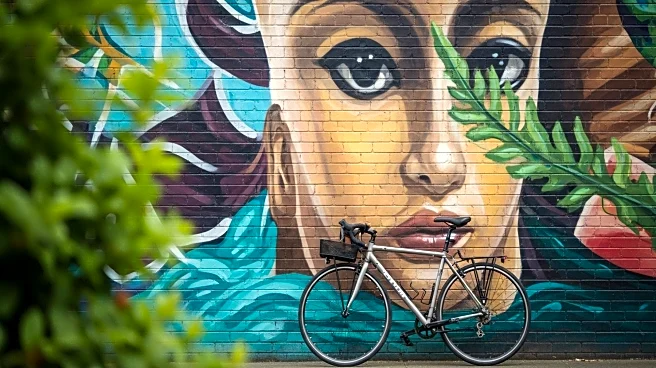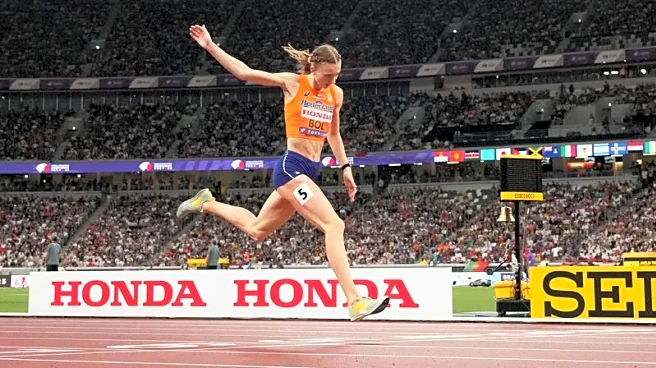What is the story about?
What's Happening?
Recent developments in city agriculture are showcasing innovative approaches to sustainable urban farming. Various projects are being implemented worldwide, including the use of solar panels in agriculture, vertical farming, and urban gardens. The National Renewable Energy Laboratory is experimenting with matching light frequencies to plants under solar panels, which could enhance crop yields. In the Netherlands, a vertical forest tower is being developed, while in Sweden, urban gardens are gaining popularity. Additionally, ClearVue's solar glass technology is being adapted for greenhouse food production, significantly increasing plant growth yields. These initiatives are part of a broader movement towards integrating agriculture into urban environments, aiming to improve food security and sustainability.
Why It's Important?
The integration of agriculture into urban settings is crucial for addressing food security challenges and promoting sustainability. By utilizing innovative technologies such as solar panels and vertical farming, cities can reduce their carbon footprint and enhance local food production. These methods not only increase crop yields but also contribute to energy efficiency, as seen with ClearVue's solar glass, which generates a portion of the energy needed for greenhouses. Urban agriculture can also foster community engagement and provide educational opportunities, encouraging a more sustainable lifestyle. As cities continue to grow, these initiatives offer viable solutions to meet the increasing demand for food while minimizing environmental impact.
What's Next?
As these urban agriculture projects continue to develop, there is potential for widespread adoption in cities across the globe. Stakeholders, including city planners, environmental organizations, and policymakers, may explore ways to integrate these technologies into existing urban infrastructure. Future research and investment in agrivoltaics and vertical farming could lead to further advancements, making urban agriculture more efficient and accessible. Additionally, public awareness and support for sustainable food systems are likely to grow, driving demand for more innovative solutions in urban farming.
Beyond the Headlines
The shift towards urban agriculture also raises questions about land use and urban planning. As cities adapt to incorporate more green spaces and agricultural projects, there may be challenges related to zoning laws and resource allocation. Furthermore, the success of these initiatives depends on collaboration between various sectors, including technology, agriculture, and government. The cultural impact of urban farming should not be overlooked, as it can transform cityscapes and influence societal attitudes towards food production and sustainability.
AI Generated Content
Do you find this article useful?














